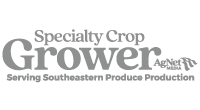
DepositPhotos image
As almond growers in California navigate the season, they continue to battle two major fungal diseases: botrytis and hull rot. According to Cassandra Rieser, Technical Service Manager for UPL, these diseases present significant economic challenges due to their timing and complexity.
Botrytis primarily affects almond trees during bloom when cool, rainy weather creates favorable conditions for the fungus to thrive. “A lot of times this happens early in the season,” Rieser explained. “Growers must time their fungicide applications carefully to protect fragile blooms before cold, wet weather sets in.” She also emphasized the importance of reapplying fungicides as soon as field conditions allow to ensure curative action against any infection that may have already occurred.
Hull rot, on the other hand, emerges later in the season and is caused by multiple fungal pathogens, including Rhizopus stolonifer, Monilinia spp., and sometimes Aspergillus spp. The complexity of hull rot makes it particularly difficult to control.
With California experiencing extended cool, wet conditions this year, Rieser advised growers to remain vigilant. “Many have already completed their bloom spray applications, but continued monitoring of weather conditions is key,” she said. She recommended scouting for signs of summer diseases, including alternaria, anthracnose, and scab, particularly in orchards with limited airflow due to pruning practices.
To manage these diseases effectively, Rieser suggested using a diverse mix of fungicide FRAC groups. “Growers should rotate between groups 7, 9, 11, and 3 to target various pathogens,” she advised. UPL has introduced a new fungicide, Axios 20SC, containing FRAC group 52, which provides an additional tool to combat resistance issues.
For more information, Rieser encouraged growers to contact their UPL sales representatives or visit UPL’s updated website at uplcorp.com/us. As almond growers continue to manage disease risks, proper planning and timely fungicide applications will be critical to maintaining yield and economic stability in the industry.











